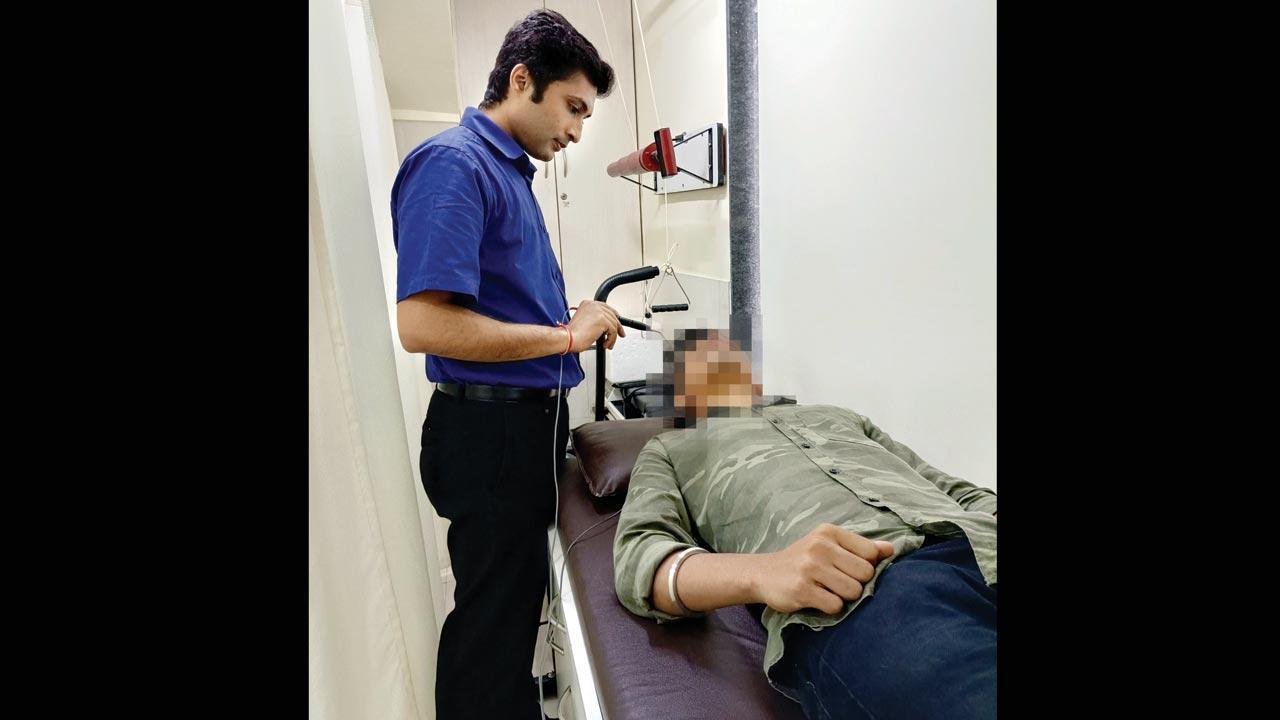City doctors say earlier there used to be one case in a month but after the pandemic started, they have encountered cases almost every week

A patient undergoes physiotherapy as part of the treatment for Bell’s palsy
He said that cases of Bell’s palsy were seen before the pandemic as well, but there weren’t many. “Earlier there used to be one case in a month but after the pandemic started, we have encountered cases almost every week, sometimes two to three in a week. When the patients come to us, they seem to be scared, but most recover completely with physiotherapy and short courses of steroids,” added Dr Makhija.
Dr Prashant Makhija, neurologist, Wockhardt Hospital, Mumbai and Dr Anil Venkitachalam, consultant neurologist, Nanavati Max Hospital
Dr Vinith Karanth, physiotherapist at Zen Hospital, said in the last six months they had seen a drastic rise in the number of Bell’s palsy cases with a history of COVID-19 infection.
“Apart from the medical treatment, physiotherapy which includes stimulation of the facial nerve with electrical impulses helps in faster recovery. Facial nerve stimulation helps to restore muscle tone. Early diagnosis of Bell’s palsy and proper treatment play a key role in complete recovery,” he said.
Also Read: Mumbai: Not enough samples for BMC's genome sequencing lab
Dr Anil Venkitachalam, consultant neurologist and movement disorder specialist, Nanavati Max Hospital, said he has been getting four to five cases of Bell’s palsy with a history of COVID-19 daily. “Bell’s palsy is a known post viral infection complication. It is commonly associated with herpes infection. Usually the peripheral portion of the facial nerve is affected,” he added.
“The COVID-19 virus itself is known to cause a lot of neurological problems. Even in Bell’s palsy, it can be just the infection itself,” said Dr Venkitachalam.
Unlike the other post COVID-19 complications, he said the treatment of Bell’s palsy was simple. “The treatment includes use of steroids and facial massage with physiotherapy. We have to monitor such patients for signs of deterioration,” he added.
Bell’s Palsy symptoms
. Drooping and loss of movement on one or both sides of the face
. Difficulty smiling
. Incomplete closure of the affected eye
. Change in taste
. Sound appears to be a bit louder in one ear
. Difficulty with some speech sounds or keeping food or drink in the mouth
 Subscribe today by clicking the link and stay updated with the latest news!" Click here!
Subscribe today by clicking the link and stay updated with the latest news!" Click here!











